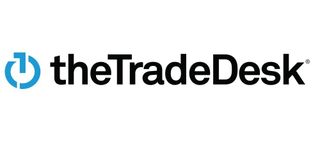74% of Young Adults Say They’ve Cut Cord or Plan To

With live sports off the air because of the Coronavirus crisis, cord cutting is likely to accelerate, especially among young adults, a new survey from The Trade Desk found.

In the survey, 64% of all households said they have cut the cable TV cord, are planning to, or have never subscribed. The numbers are much higher among younger adults in the 18 to 34 age group, with 74% down on traditional payTV.
The Trade Desk said the shift away from pay-TV is becoming even with more consumers staying at home and boosting TV consumption because of the disappearance of sports programming live sports is the primary reason 60% of those studies said they have held onto their cable and satellite subscriptions.
“With only a quarter of young professionals having any long-term interest in traditional cable TV, in a few years we won’t be talking about linear or cable TV at all. It will all be online and streaming,” said Brian Stempeck, chief strategy officer at The Trade Desk. “For broadcasters and advertisers, it’s now all about how quickly they can pivot to where the eyeballs are moving and many of them are already investing heavily in order to succeed in a world of connected TV.”
According to the survey, consumers favor ad-supported streaming compared to subscription VOD, with young viewers most likely to favor free. Among 18 to 34 year old, 35% said they would rather watch a free streaming service with ads or see some ads if that meant a subscription was cheaper. That compared to 31% who thought paying for an ad-free service was better.

Those young viewers said they preferred ads that were relevant to their specific interests.
The most frustrating part of advertiser supported streaming services was seeing the same ad over and over again. They also complained about too many ads and too many ad breaks in their shows.
Broadcasting & Cable Newsletter
The smarter way to stay on top of broadcasting and cable industry. Sign up below
.“As more consumers shift to connected TV, broadcasters and advertisers can more easily address issues of ad frequency and ad volume, in ways that are not possible in a traditional TV environment,” said Stempeck. “With CTV, the advertiser can work with an ad tech partner to understand who was exposed to an ad, even across devices, and can reduce ad frequency as a result. In addition, with CTV, advertisers can apply more data science to their advertising, making it more relevant to the consumer without compromising their privacy. This increases the value of the ads, which means lower ad volume, over time.”
The survey was conducted for The Trade Desk by YouGov, which conducted 2,681 online surveys between April 1 and April 3.
Jon has been business editor of Broadcasting+Cable since 2010. He focuses on revenue-generating activities, including advertising and distribution, as well as executive intrigue and merger and acquisition activity. Just about any story is fair game, if a dollar sign can make its way into the article. Before B+C, Jon covered the industry for TVWeek, Cable World, Electronic Media, Advertising Age and The New York Post. A native New Yorker, Jon is hiding in plain sight in the suburbs of Chicago.

